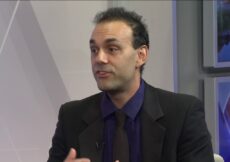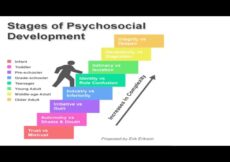Shingles in children is a painful skin rash caused by the varicella-zoster virus. It is the same virus responsible for chickenpox infection (1). The rash from shingles can appear anywhere on the body and can be extremely painful (2).
Herpes zoster affects more than one million people in the US each year. Around 30% or one in every three people develop shingles. Shingles are not common in children and are seen more commonly in people over 50. Read this post to learn about the causes, symptoms, diagnosis, treatment, and prevention of shingles in children (3).
Causes And Risk Factors Of Shingles In Children
Once you have recovered from chickenpox, the virus may lie dormant in the body’s sensory nerves. The reactivation of the virus leads to shingles, also known as herpes zoster infection (3).
The following factors may put a child at a greater risk of developing shingles:
- Children who develop chickenpox before one year
- Mothers who develop chickenpox late in pregnancy
- Children with weakened immune systems
Children vaccinated against chickenpox are at a relatively lower risk for shingles when compared to a risk of re-infection after experiencing chickenpox. In addition, the symptoms are milder in vaccinated children (4).
Symptoms Of Shingles In Children
The infection causes small painful rashes or blisters on one small section on either side of the body. In some cases, the pain continues for a prolonged period, even after the rash is gone. It is called postherpetic neuralgia (PHN) (3).
The blisters are more common on one side of the trunk or back but may also be seen on the face, legs, or arms. The following are the common symptoms of herpes zoster.
- Pain, numbness, burning, and tingling before the onset of rash and after the rash is cleared
- Fluid-filled blisters burst open, and scab formation occurs over them
- Rashes that cure within two to four weeks
- Fever accompanied by chills
- Headache
- Nausea
The symptoms may vary from one person to another. Moreover, these symptoms may be similar to the symptoms of some other skin conditions. Consult your doctor if you notice any symptoms.
Complications Of Shingles In Children
Rashes from shingles infection may get infected with bacteria and lead to a skin infection called cellulitis. After the rash subsides, the pain may continue for a long time and cause discomfort in children. Consult your child’s doctor to get tips on pain management in such cases (4).
Diagnosis Of Shingles In Children
Diagnosis of shingles is mainly based on physical examination and a thorough medical history. In some cases, the doctor may use the following tests(3):
- Skin scrapings are collected and checked under a microscope for the presence of a virus that confirms shingles.
- Blood tests
Treatment For Shingles In Children
The treatment of shingles is dependent on the child’s symptoms, age, general health, and severity of the condition. Prompt treatment with antiviral medications reduces the symptoms’ severity and chances of developing long-term nerve pain (5).
The child may be prescribed acyclovir, famciclovir, or valacyclovir. These medications are only suggested when their benefits outweigh the risks.
You may check with the doctor regarding the safety of OTC pain medications such as acetaminophen or ibuprofen for fever and pain. Avoid giving ibuprofen to children younger than six months old without your doctor’s consent. Also, do not give aspirin as it may cause Reye syndrome. The doctor may prescribe strong pain medicine if the child has severe pain (4).
Home Remedies For Shingles
Home remedies can be an adjunct to the antiviral treatment and not a standalone mode of managing shingles infection. Moreover, because these remedies are suggested based on anecdotal evidence, you should seek your doctor’s consent before trying them.
A cool bath or a cool shower helps soothe irritated skin and reduce itchiness. An oatmeal bath or soaking in a tub filled with raw oats or ground oats powder can also help reduce the symptoms of skin irritation and itchiness. Avoid using hot water as it can further irritate the skin.
Applying a cool, moist compress several times a day helps relieve symptoms, especially the pain. Avoid applying ice as it may increase the pain and rashes.
- Baking soda or cornstarch paste
Mix two parts of soda or cornstarch with one part of water to make a paste. Apply it to the rash and wash off in 15-20 minutes. You may do it once or twice a day.
Using mild and unscented lotions or cream can ease the discomfort. However, it does not speed up the healing process. Calamine lotions can also help in pain relief.
Some foods that may promote healing by strengthening your immune system are orange and yellow fruits, leafy green vegetables such as spinach, red meat, eggs, chicken, fish, dairy, whole grains, legumes, beans, and tomatoes. Avoid foods containing high amounts of sugar, arginine-rich food, refined carbohydrates, and high-fat foods.
Prevention Of Shingles In Children
There is no shingles vaccination for children. However, if the child has not contracted a chickenpox infection, you can check with the doctor about giving them a chickenpox vaccine (4).
Shingles do not occur in children who have not experienced chickenpox earlier. However, the varicella-zoster virus responsible for shingles may transmit chickenpox in them (6). Contact your child’s doctor if the symptoms worsen, do not improve, or develop other new symptoms (4).
References:
MomJunction’s articles are written after analyzing the research works of expert authors and institutions. Our references consist of resources established by authorities in their respective fields. You can learn more about the authenticity of the information we present in our editorial policy.
The following two tabs change content below.




































